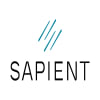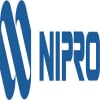Dive Brief:
- Oncology is a lucrative field for pharma, but the payoff is heavily concentrated around just a few dozen medicines, finds a new report from the Iqvia Institute for Human Data Science.
- The top 35 cancer drugs by sales accounted for 80% of the roughly $110 billion spent globally on oncology therapeutics last year, according to Iqvia. More than half of approved cancer drugs earn fewer than $90 million in annual sales, by comparison.
- Increasingly, those winners command median annual list prices of more than $150,000, highlighting the premium pricing that has spurred an investment boom in cancer R&D.
Dive Insight:
Iqvia's report, released annually, underscores just how quickly the market for cancer drugs has grown. Spending on oncology medicines in the U.S., for example, has doubled since 2012, soaring to just under $50 billion last year.
The lion's share of that growth has come from new drugs launched within the past five years, a good number ranking among the more expensive medicines on the market.
All told, spending on cancer in 2017 rose to $133 billion, up from $96 billion in 2013, Iqvia found. That figure includes about $24 billion spent on supportive care. Growth rates slowed thanks to an atypically low number of new drug approvals in 2016, but remain in the double-digits both abroad and in the U.S.
Interestingly, Iqvia's findings also highlight the wide split between the few dozen blockbusters which account for the vast majority of cancer drug spending, and the remainder of the market.

The bottom half of approved cancer medicines, by Iqvia's calculation, represented only 2% of overall cancer spending. Many of those drugs are older, or have generic alternatives available.
Still, the findings showcase the dramatic payoff drugmakers can earn from developing a hit cancer medicine. Checkpoint inhibitors, such as Merck & Co.'s Keytruda (pembrolizumab) and Bristol-Myers Squibb's Opdivo (nivolumab), are perhaps the best example of this in the period Iqvia analyzed.
Spending on PD-1/PD-L1 blockers, which include three other approved medicines, accounted for one fifth of the total spending growth in the U.S. from 2012 to 2017. Given Keytruda and Opdivo's runaway commercial success, that data point may not be surprising. But it's clear evidence of how significantly the introduction of PD-1 and PD-L1 inhibitors have shifted the overall market for cancer therapeutics.
Those new immunotherapies are also representative of the new pricing landscape in cancer. Median annual costs for new drugs have risen steadily since 2000 and, last year, all 14 drugs launched were priced above $100,000 per year.

Many of the most expensive drugs were only OK'd for small markets, reflecting the shift toward developing drugs for niche patient populations. Novartis' CAR-T therapy Kymriah (tisagenlecleucel), which costs $475,000 for patients with acute lymphoblastic leukemia, is a notable outlier in this regard.
More than 90% of drugs with annual costs above $50,000 were approved for use in fewer than 10,000 patients, Iqvia found.
The group's report also found few signs of an impending slowdown in the market for cancer drugs.
While annual spending increases have moderated slightly, Iqvia predicts growth will average between 10% and 13% globally, and between 12% and 15% in the U.S. If that holds, global spending on oncology therapeutics could reach $200 billion by 2022.














